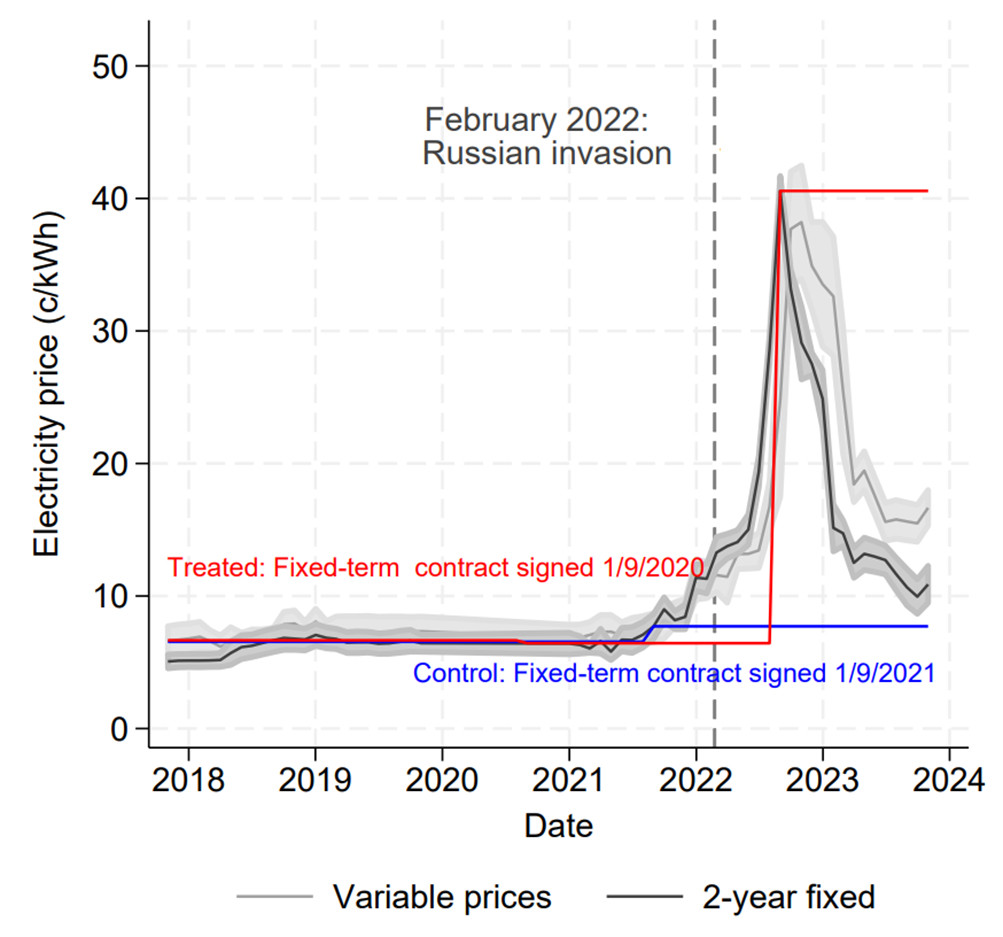This brings us to our identification (matched diff-in-diff):
- Some households made fixed-price contracts at the right time (blue line=control)
- Others weren’t as lucky—their contracts expired during the crisis, creating within-household variation in prices (red line=treated) /3
- Some households made fixed-price contracts at the right time (blue line=control)
- Others weren’t as lucky—their contracts expired during the crisis, creating within-household variation in prices (red line=treated) /3

Comments
(a) Reduce electricity use—the standard demand response
(b) Earn more—through benefits, labor markets
(c) Default on your bill!
(d) Cut other spending or use savings—we can construct a residual term /4
- Cutting electricity use by 18%
- Increasing labor earnings by 1%
- Facing a 0.4 pp higher default risk
- Reducing other consumption by 5% /5
They started cutting electricity use early—likely via energy-saving investment. When contracts ended abruptly due to retailer bankruptcy, we see no such effect /6
- Low-income: low demand elasticity, little earnings adjustment, big drop in other spending and higher default risk
- High-income: able to cut electricity use more, small drop in other spending, no rise in defaults /7
Each bar height is the static effect—how much the bill increases for each income group. The colors reflect all the response channels. /8
As a result they (iv) have higher default risk and (v) must reduce residual consumption further /9